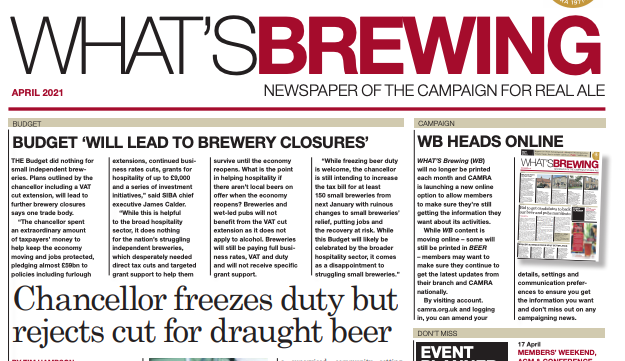A green touch of glass
Audio Description
Login here to listen to the audio description

Did you know that recycling is so efficient that it can take up to 50 times less energy to make new glass from old bottles than to make it from sand?
In fact, if you were to recycle just one glass beer bottle, you can save enough energy to light a 100-watt light bulb for 20 hours or run a TV for three.
The recycling of beer bottles is one of the most effective available today. The process consists of crushing the bottles into small pieces (cullets), washing, melting and then moulding into new ones.
This process is highly efficient because it only takes two kilos of recycled glass to make one of new glass. This means you can get four times as many bottles from recycled glass than from raw materials.
Therefore, there are significantly lower greenhouse gas emissions involved in making the bottle from recycled glass compared with creating from scratch.
How are beer bottles made?
The glass in beer bottles is made of silica sand and soda ash (sodium carbonate). When they are mixed and melted at high temperatures, it forms a completely transparent glass that's durable enough to withstand the transportation and storage of beer.
Colour can then be added for aesthetic purposes. This is done by adding various metal oxides. The most common are green (copper oxide), blue (cobalt oxide), brown (iron oxide) and red (selenium oxide).
However, only three types of glass can be successfully recycled: clear, brown and green. Most other types are not recycled due to their impurities or toxicity levels. This means many bottles will end up in landfills. It’s why you rarely see single-use glass products like beer bottles in pinks, purples and yellows for instance.
Do you need to separate the different coloured bottles?
Before recycling facilities adopted new filtering technologies for glass, it used to be the case that consumers and businesses had to separate their beer bottles by colour so that they could be successfully recycled. And, depending on where you live, this may still be the case.
Luckily, most counties no longer require you to separate your bottles. Instead, the recycling facilities will now do this for you using advanced detection and sorting systems on a mass scale.
The reason for separating the colours in the first place is to do with the different melting points of each metal oxide/colour has.
For example, iron oxide (brown) melts at 1,700°C and manganese at 1,000°C. This means that when you heat up a batch of glass, it will take longer for the manganese to melt than the iron. If you have a high temperature flame, it will only melt the iron at the bottom of your bottle first. This means that you end up with a brown bottom and a clear top. When you cool down this new bottle, it will form a crack right along this line and likely break.
To keep the structural integrity of the recycled beer bottles, the colours need to be kept separate.
Why are beer bottles almost always brown or green?
It’s all to do with the sun. Clear bottles do absolutely fine when it comes to storing beer in the winter. However, as soon as summer comes around, preservation problems crop up.
That’s because the sun’s UV rays can easily penetrate transparent glass, turning the beer slightly sour. In fact, the lingering smell it causes is so off-putting that clear glass bottles are now almost never used for ales, lagers, and ciders.
As such the darker green glass was used as an alternative to block the UV rays and preserve the taste and smell during the summer months. However, post WWII, there was a world-wide shortage of copper-oxide which makes green glass and so brown was then used instead. Today, we see a mix of both.
What about labels?
Similarly to colour sorting, the responsibility used to fall on the consumer or business to scrape off their labels and rinse out the contents. But now, as long as you ensure your bin only includes unbroken bottles then the recycling facilities will do the rest. Although, you should still remove the bottle caps and make sure these don’t end up in the glass bins.
The reason broken bottles should be kept separate from the undamaged bottles is because it makes the separation process a lot trickier as fragments of different coloured glass can end up in the wrong place.
Glass is one of the best materials when it comes to recycling and it’s perfect for storing beer. That’s why it’s so important that we try to keep bottles out of landfill and instead use dedicated glass bins for our bottles. It’s such a waste (no pun intended) for us to throw away our bottles rather than to recycle them.
Alfie Godfrey is marketing manager at Waste Managed.

 view archive
view archive
 view events
view events